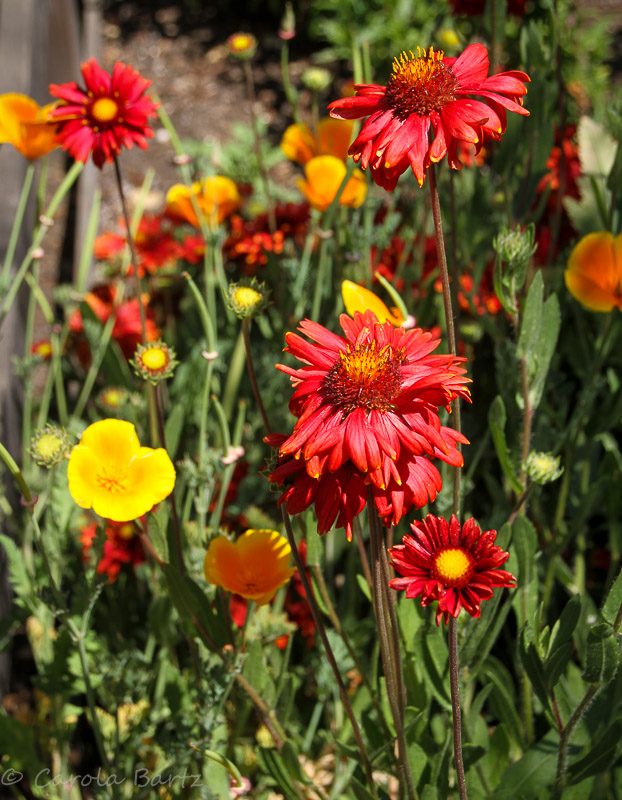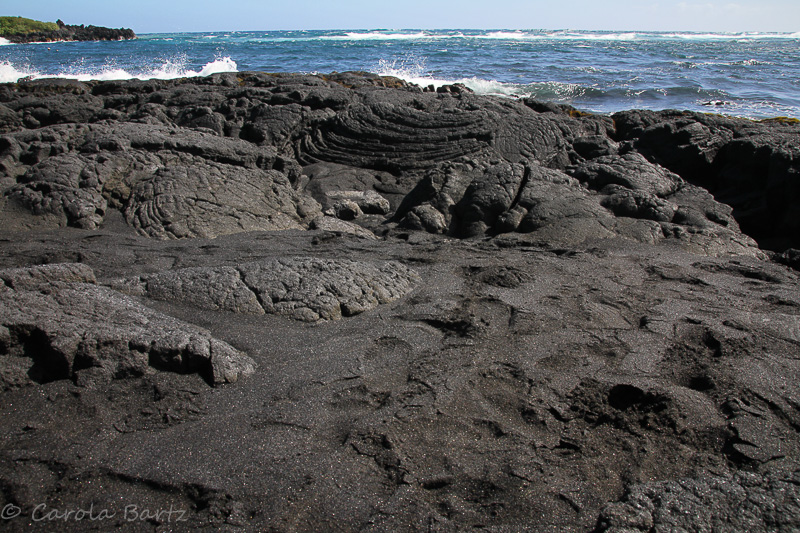Tuesday, May 29, 2018
How Green was My Valley
No, this is not a post about a family of Welsh coal miners, but about a hike we did in April in one of our regional parks, Sonoma Valley.
Sonoma Valley Regional Park was smack in the middle of the October fires - this was the Nuns Fire - and almost completely burned. It was closed for weeks and weeks after the fire and only opened at the end of 2017. When we went there in April we were prepared to see a lot of damage, but we were in for quite a wonderful surprise - a green valley.
While there were scorched tree stumps and burned tree bark, the fresh green color of the vegetation was what really struck. Nature was recovering for sure! The park looked healthy even though it was quite clear that an inferno had taken place only six months before.
People came out in crowds to enjoy this beautiful gem between Sonoma and Santa Rosa.
As expected there was wildflower galore - and this was only the beginning of it.
We first walked through the valley - an easy stroll - but we decided to go up into the forest for our way back, a much more hilly and strenuous hike.
And as you can see, the forest didn't look too good. A lot of the madrones and manzanitas were charred, but the good news is that they didn't die and will probably recover. When we got closer it was amazing to look at the bark of the trees.
The fire was not able to destroy these beautiful trees. It is breathtaking to witness how nature heals itself and how fast it springs back to life. While it will take a while until the entire park will have recovered completely, it is so encouraging to see how everything comes back to life. Just a little stumble along the way...
Not so much for us humans, though. There were still burnt down sites that hadn't been cleaned up, even six months after the fire. Over and over again we are shown the dimension of this disaster.
It's so much easier and encouraging to look at nature.
But despite the earthquakes, wildfires and following landslides I love where I live. I don't think I'd like to live anywhere else right now.
Friday, May 18, 2018
The Garden in May
Marguerite Daisy "Summit Dark Pink"
May is a beautiful month in the garden. After rather shy early spring months the days are finally warming up and the garden is exploding with color. The soil is not yet dried out as it will be very soon and pretty cool nights keep some of the moisture. Just like every spring I had to pull out some plants that didn't make it through our mild winter, and that means there are spots in the garden that need to be filled. Several trips to my favorite nursery were in order. Ah, a gardener always finds space in the garden for new plants...
The California poppies - our state flower - always draw the attention. They are such happy flowers. Who can resist this good-mood color?
Eschscholzia californica
They turn up everywhere - they are annuals but very busy (and successful) re-seeders. They come in different shades of oranges and there are even pale yellow ones that look rather delicate (they are not!). When they appear next to other plants they can create stunning color combinations - like with these gaillardias (blanket flower):
Gaillardia "Burgundy"
The Spanish Lavender is always the first of the lavenders to bloom, either in pink or in purple. The pink one even blooms in winter, it never seems to stop. Unfortunately I have lost the tag to it and can't tell you which one it is.
Spanish Lavender "Otto Quast"
A neighbor once gave me some seeds of the lovely Nigella damascena, also known as Love-in-a-Mist, after I had told her how much I like them in her garden. I sowed them and then forgot about them. They turned up in the spring of last year, re-seeded, and now I have so many more. They are simply lovely.
Love-in-a-Mist
Since this is a low-water, drought-tolerant, deer resistant (for the most part), mainly native plants garden the Matilija Poppies are a must. It is easy to plant them, but not that easy to grow them. Some gardeners actually plant three of them so that they will end up with one surviving because so many of them just die. I had tried to grow them in the Brookdale house where they always died. I gave them one last chance here, planted only one (always the optimist) and got lucky. The thing is - once you get to the point that they're established they grow and grow and grow.... and turn up in other parts of the garden since they spread by rhizomes. A plant only for the big garden and a complete stunner.
Matilija Poppy with Verbascum "Southern Charm"
Talking about poppies, let's not forget the "real" poppy, the Papaver. Up to last year I had so many of them that I was afraid they would take over completely, so I ripped most of them out before they went to seed. This spring I have far less that I will let go to seed again. They are way to beautiful to get rid of them completely. Some of the people who regularly walk by my garden (and always stop to chat when I'm out there) actually told me that they miss my poppy garden...
This is a favorite spot in a shadier part of the garden (thanks to a huge Blue Elderberry):
The Chinese Foxglove in the back have multiplied, the flowering currant has become quite big, the hollyhocks are doing okay after I sprayed them with "Liquid Fence" to discourage the roaming deer to have them for dinner all the time, the smoke bush finally grows in (it experienced the same fate as the hollyhocks) and everywhere - and I mean everywhere - there are wild Forget-Me-Nots. Just recently I moved the birdbath - two bigger terracotta pots put on top of each other upside down and a terracotta saucer on top - into this space and the birds seem to like it in this spot much more than in the old one. It's more protected I guess.
Rehmannia Chinese Foxglove
Forget-Me-Not
One last plant - this one I discovered two years ago and planted it out of curiosity. It has become a true showstopper. It is growing like mad right now and the flowers are starting to perk up. This is Salvia sclarea "Piemont". It pretty much thrives on neglect, and if I'm not mistaken I see little ones popping out of the soil - they readily re-seed. The erect flower spikes, once they're open, are two shades of lavender and white. Stunning.
With the exception of the very first photo all these images are from my huge front garden. The backyard is still a work in progress. Maybe - I still have to think about that - I'll show some pictures from there as well. It has a blanket of weeds (aka "lawn") that I'm slowly sheet mulching into something more beautiful.
Some flowers in the front try to escape through the redwood fence that the Geek and I built five years ago.
Nepeta, Catmint
Can you imagine that it all started out with this almost six years ago (after the sheet mulching was complete)? From this...
... to this:
If you want to know how I did the sheet mulching you can read about it here.
Friday, May 11, 2018
Black Sand and Green Sea Turtles
For obvious reasons my thoughts are on the Big Island a lot these days. We are in contact with the owners of the Avocado Tree House and know that for the time being they are safe - if you can ever be really safe, living on a volcano. Their organic farm is just beyond the East Rift Zone toward the ocean and the nearest fissure is about three miles away, but the lava is flowing in the other direction (downrift and farther into the lower East Rift Zone). As of today there are 15 fissures in Leilani Estates and neighboring Lanipuna Gardens. My heart breaks for the people who have already lost their homes to the lava.
I thought that today I take you to the other side of the volcano, toward the west. We had heard about the black sand beaches but never visited one back in the summer of 2016. This time, however, we discovered Punalu'u Black Sand Beach. It's almost like a regular beach with the slight difference that the sand is volcanic and therefore black and there is a lot of lava. After all, we're almost at the foot of the volcano, near the South point of the island.
Of course there were lots of palm trees, and as usual it was a bit windy, but otherwise a gorgeous day.
We could sit on the lava and look out toward the ocean, watch the waves break against the rocks.
The sand was - indeed - black, coarse and there were some sparkles in there as well.
I couldn't stop taking pictures of the tiny beach snails. They were clinging onto the lava everywhere.
We watched a black crab crossing the lava - sideways of course. Yes, even the crabs were black!
And then there was this bird - I assume (but am not sure) it's a Stilt Sandpiper in winter plumage. I observed it for quite a while.
Since this is Hawai'i, there was also this on the beach - a rescue surfboard!
I didn't mention the palm trees, did I?
And then we saw this:
But where were they?
We found them a couple days later.
They were super calm and didn't pay any attention to the picture taking humans. Thankfully no one got too close to them, everybody gave them lots of space.
They were beautiful.
I could have watched them for a looong time.
Subscribe to:
Posts (Atom)




































































